Visitor project: Dominion storage solution
Dominion is an award-winning deck-building card game that has ten expansions released as of this writing. There are a wide variety of proposed storage solutions to the problem of toting about several thousand cards and sundry mats and tokens, and Sherwin decided it was high time he moved on up from the method he had been using to a proper receptacle.
First, a look at the final product:
We managed to fit about 3700 unsleeved cards along with the other odds and ends in with room for further expansion. The dividers make every card easy to locate and access, and the box dimensions keep the whole package relatively compact and portable.
Our starting point was an ad-hoc solution that involved storing each set of Kingdom cards in separate pockets on 9-card sheets, with the base cards being held in deck boxes and the tokens in a bead container, all of which were piled into one of the original game boxes and wrapped in a tote bag. This system worked for a time, but as further expansions were released, both box and tote showed increased signs of strain, neither having been designed to hold more than one game or expansion at a time.
The sheets can be seen overflowing from the game box, which barely squeezed into the tote
The box had already been replaced once before, and when the replacement itself began showing severe signs of wear we began looking into other options. We debated building one out of lumber, but eventually settled on using a case that had been tried and tested in other storage solutions for our first attempt.
We knew that we would require some sort of organizer to keep each column of cards in line, and laser-cut some test pieces out of cardboard to check the fit.
Determining the dimensions of the caddy and how to fasten them
Assembling the mock caddy, then testing the fit of the cards
We also planned to engrave the game’s logo onto the box using the laser cutter, and had two waxes and two stains we wanted to try. The case came with a tray insert that was made of the same wood, though unfinished, so we did a test burn both before and after applying the four coats to observe the effect. We also removed the hardware from the case and sanded off the veneer in preparation.
Mocking up the logo and testing burn parameters for the wood
Applying the coats of wax and stain to the test piece
The logo we used had too much background and shading for a clean burn. We ended up using Pawel Pawlak’s Dominion icons to generate an appropriate vector image of the logo and banner outline for the laser cutter.
Testing the final logo
After finalizing the dimensions of the caddy pieces and wax choice, we then cut the pieces out of clear acrylic, assembled and affixed them with acrylic glue, burned the logo into the case cover, then applied the coats of wax.
Assembling and checking the fit of the final caddy
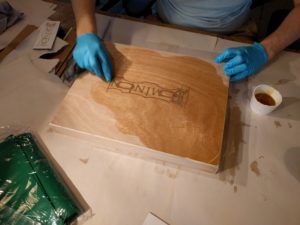
Applying the wax to the case exterior
To minimize cards sliding around and give them a cushion, we cut a segment out of poker felt and glued it to the bottom with spray adhesive. We attempted to replace the stock hardware with sturdier options, but found the wood to be too thin to support any of the screws from the cabinet fixtures.
Testing different adhesives on felt samples and reattaching the hardware to the finished bottom
Finally, after completing assembly of the box, we had to transfer the actual game components from the old box to the new one. We created the divider tabs using sumpfork’s Dominion Divider Generator and had them printed on cardstock and trimmed at a local print shop.
The finished box ready to receive the game materials
Moving the cards into their new home
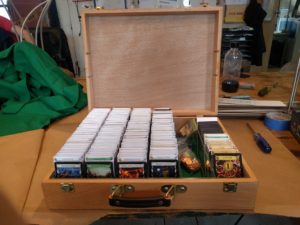
Ready to play!
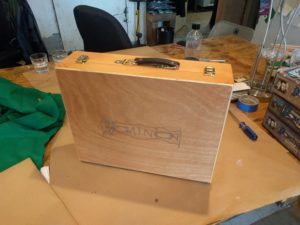
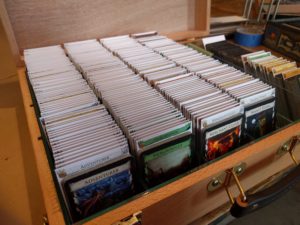
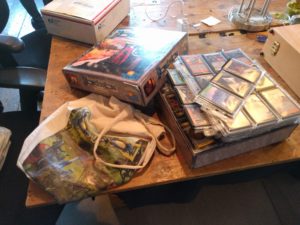
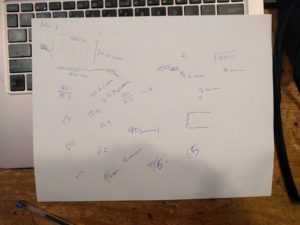
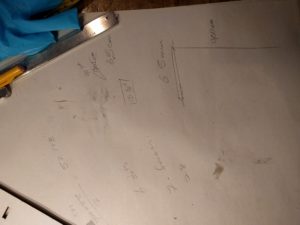
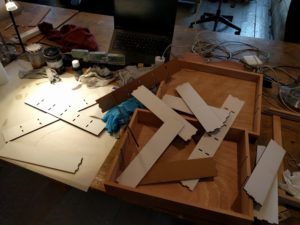
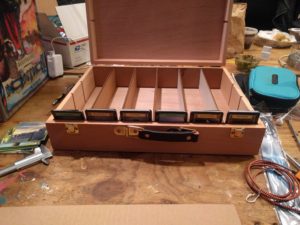
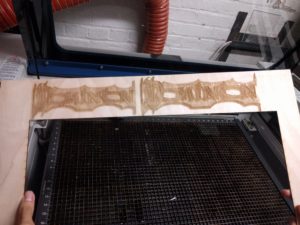
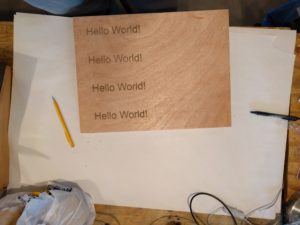
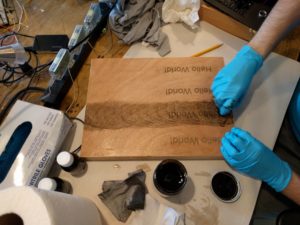
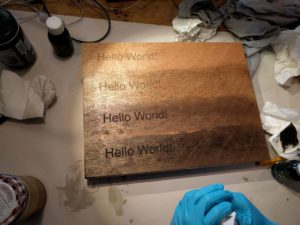
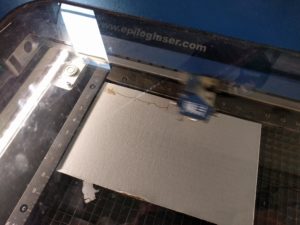
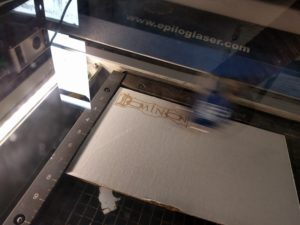
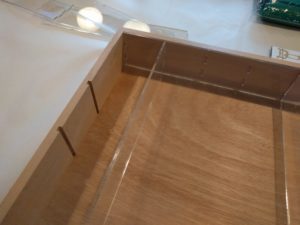
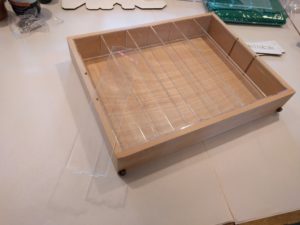
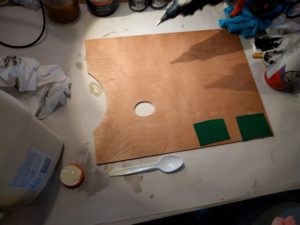
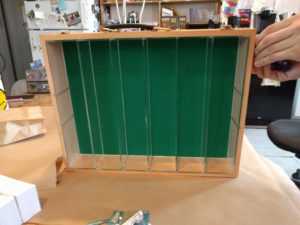
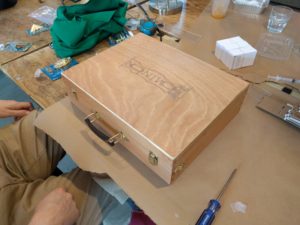
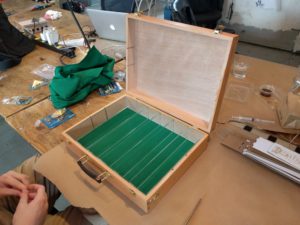
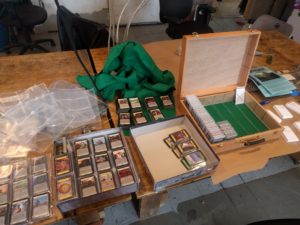
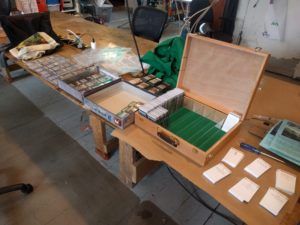
Sorry, the comment form is closed at this time.